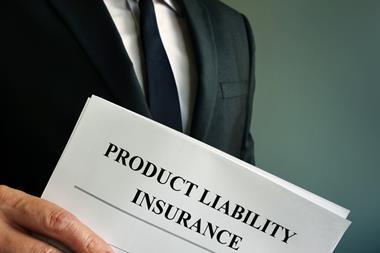Two internationally well-known captive experts talk about setting up a new captive, and how the landscape is evolving for risk managers.
Françoise Carli and Maurizio Micale will be speaking at the Risk-!n conference on May 25 in Switzerland. During their session, they will explain what has changed for captive owners and insurers recently, the megatrends for the future, and the pitfalls to avoid when creating a captive.
-
Françoise Carli, President, Zakubo Consulting
-
Maurizio Micale, Corporate Insurance Risk Management | Group Vice President, STMicroelectronics
Is demand growing for captive solutions - and what is driving the demand?
Françoise Carli: The current market situation characterised by a lack of available capacity, the excessive price of insurance solutions, the growing chilliness of traditional insurance for certain natures of risks, inflation, and the potential strengthening of the economic crisis in Europe are the main drivers for captive demand, and the demand has been significantly increasing over the last months.

What drove you to set up a captive solution for STMicroelectronics?
Maurizio Micale: The main driving factor for STMicroelectronics has been the lack of risk appetite by leading insurance carriers to underwrite the risks faced by a semiconductor business.
We have experience in risk financing and transferring having had to retain our own higher deductibles due to the lack of underwriting capacity for the primary layer as well as for the excess layers in certain lines of insurance.
What was the trigger that caused you to develop a new captive in Switzerland?
Maurizio Micale: STMicroelectronics has its headquarters based in Switzerland and thus it was natural to domicile the reinsurance captive in the country. In Switzerland, there is a well-developed captive management ecosystem.
What were the main steps that you took to successfully set up the captive in Switzerland?
Maurizio Micale: The main steps are common to all captive creation, namely: obtaining a management agreement, following the FINMA creation process, designing the risks to include, and ensuring adequate governance.
There were no specific and unexpected challenges. The creation process has been executed in due time as expected.
How should risk managers be thinking about captives within the range of solutions available to them?
Françoise Carli: Deciding to set up a captive is not a quick and easy solution, there are alternatives provided by insurers and reinsurers which are more flexible and short-term.
However, these solutions do rely on the insurers’ / reinsurers’ strategies which may change – in terms and in conditions – putting risk managers sometimes in a difficult position at renewal time.
Having a captive brings a high degree of freedom that will give valuable help to the risk manager when discussing with insurers/ reinsurers, especially if he/she has a significant premium volume.
If the risk manager has his company’s risks in his or her hands, the captive solution can really help him to build a powerful tool for the company’s risk insurance and management.
How can risk managers know whether a captive is appropriate for their needs? What are some of the pros and cons?
Françoise Carli: To decide on a captive solution there are some key indicators to address before making any business plan, among them the size of the insurable and the insured business, the nature and the size of the risks (together with the frequency and intensity of potential claims), the risk strategy of the company (including its appetite for risks) and the sustainability and growth of the business.
You must also consider the evolution of the company’s business, its international footprint and how its risks may change or new risks may emerge in the coming years. This will allow you to develop a long-term approach and put it to better use.
Although it takes time, money, and effort to create a captive, it is also difficult to close it. When the risk manager starts the process, he/she should already know that he/she will have to live with this choice for years!
What are some of the main things attendees will learn at your Risk-!n session?
Françoise Carli: Attendees will have the opportunity to hear about the changes in the captive environment and about the megatrends that they should expect in the European captive market.
Maurizio and I will address some of the pitfalls to be avoided mainly linked to insurers’ positions, processes and timing, and finally, the importance of the right governance to achieve the best captive setup.
To find out more about the conference, or to register to attend, visit the Risk-!n website.




















No comments yet